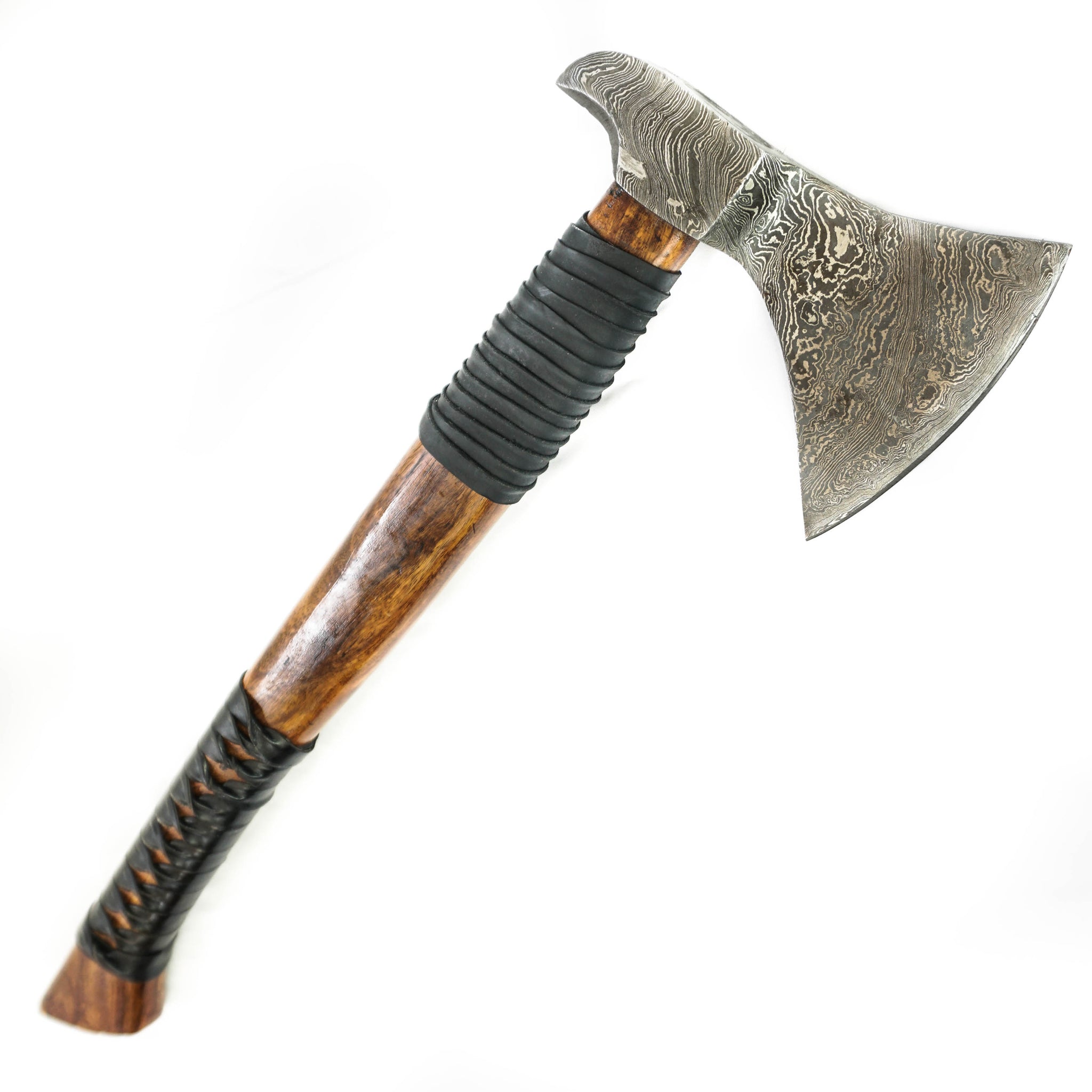

The haft measured about 110 centimeters, based upon a few archaeological findings and contemporary illustrations. The Langeid axe head has a cutting edge of about 25 centimeters, an original weight of about 800 grams and is clearly two-handed. X-ray fluorescence analysis confirmed that the band was made of brass, something that made the axe “shine like gold” in the sunlight.

Remarkably, a 15 centimeters long wooden stump of the haft was preserved.Ī band of brass, a metal alloy made of copper and zinc, encircling the stump had preserved the handle due to the antimicrobial properties. The blade was relatively intact, including the toe and heel of the cutting edge. (Photo: Museum of Cultural History, University of Oslo) However, on the outside there were discovered an ornate sword and a battle axe.Īccording to the archaeologists, the original haft measured about 110 centimeters. The archaeologists did find a wooden coffin, but it turned out to be almost empty. Now, the unique weapon found at Langeid in 2011 is recreated, and confirms that a thousand-year-old rumor is true: Facing a well-trained Norseman with broad axe was like looking death straight in the eyes.ĭuring archaeological excavations in 2011, several dozen flat graves dating back to the last part of the Viking Age were discovered at Langeid in the Setesdal valley, Southern Norway. The Viking warrior was well equipped and trained to use a variety of weapons, but it was undoubtedly the battle axes that created most “shock and awe” among the enemy. At the same time, they were powerful lethal weapons, something the recently reconstructed broad axe from Langeid in Southern Norway confirms. the 11th century, had evolved to become light, streamlined and well-balanced. (Photo: Vegard Vike, Museum of Cultural History, University of Oslo)Ĭontrary to what many believe, battle axes from the last part of the Viking age, i.e. The Langeid Viking Battle Axe: The original and the copy.
#Norse battle axe series
In the meantime, what we commonly see on the TV series is the double-edged axes which are not historically accurate.Home › Culture › The Langeid Viking Battle Axe One thing to remember is that a Viking axe is a single-edged axe. One piece of Viking battle axe amulet possibly in the 9th or 12th century

The wooden handle must have been destroyed during the time. As we can see, the axe still showcases the details of the carving. One rare Viking battle axe that can survive the test of time. The Vikings carried their axe wherever they went, either to hunt or to protect their family. From their childhood until the last resting place, they had for themselves at least one axe. For the normal farmers, the Vikings had for themselves axes. Those who had a sword hung around their body meant they had high social status or had a huge fortune.

This made the Vikings unable to possess one sword in their life. In the Viking Age, to make a sword could cost a fortune. This is quite a popular thing to know between the Viking enthusiast community. One of the most powerful weapons in the Viking Age is axe. Awesome Viking Battle Axe Artifacts: From Farm to Raid


 0 kommentar(er)
0 kommentar(er)
